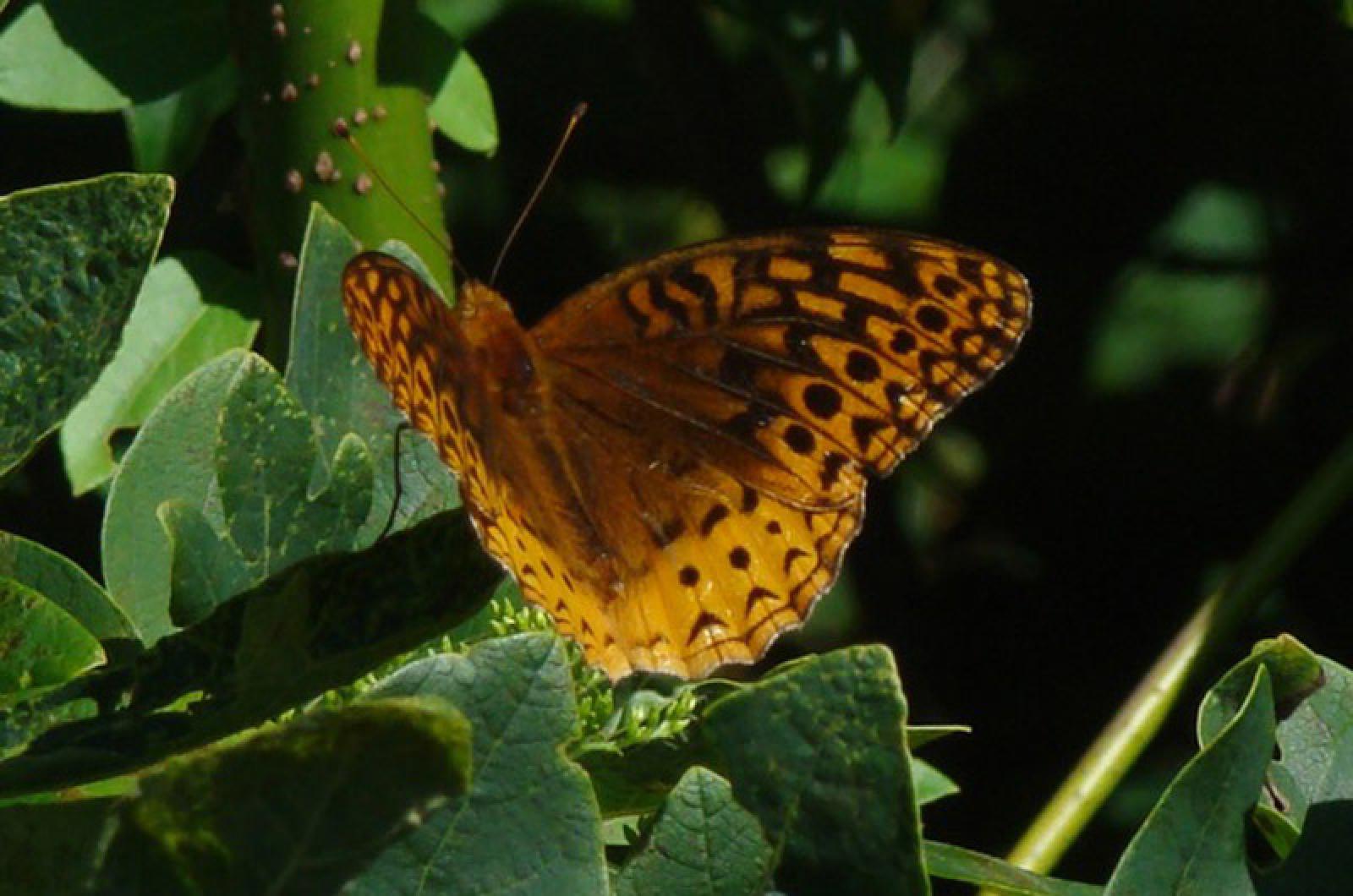David Stanwood can usually be counted on for his good nature, as well as a good nature sighting — almost always paired with a fantastic photo. He didn’t disappoint in an email last month.
Though we are already into October, David’s September sighting of a great spangled fritillary is definitely newsworthy, since these butterflies are quite unusual on the Vineyard.
According to Mass Audubon’s Butterfly Atlas, there were no sightings of this butterfly reported from Martha’s Vineyard between 1986 and 1990. Another source, Butterflies of Massachusetts, maintains that while these butterflies are present on the Island, they are only seen sporadically, listing only three sightings recorded in 1999, 2000 and 2001. David should get online and get this beauty on the books!
The great spangled fritillary is a black and orange butterfly, but leads quite a different life from its similarly colored and more famous cousin, the monarch butterfly. Instead of migrating like the monarch, the great spangled fritillary can overwinter locally, making it more of a true Islander, and less of a seasonal resident.
Eggs are laid in August and September on violets and yes, only violets. Like monarchs, great spangled fritillaries are a one-plant butterfly. One entomologist claimed to have fed the caterpillar of this species “every species of wild violet accessible from the woods, and during the winter cultivated species, and discovered no preference for one more than another.”
After the egg hatches, the first instar larva will eat a bit of its sloughed-off eggshell and then drop to the ground to find a hiding place in the leaf litter to spend the off season. The small caterpillar larva will remain on the ground in diapause (a resting state that differs from hibernation) until spring when the violets emerge and provide food for the growing black caterpillar. This caterpillar eats only at night, preferring to spend its days safely under its leaf litter home.
The butterfly that will eventually metamorphose from this curious caterpillar first flies in June. The butterflies, unlike the singularly focused caterpillar, can nectar on many types of flowers, including milkweeds, thistles, Joe-pye weed, clover, alfalfa and a variety of others.
The great spangled fritillary can be found flitting in moist meadows and woodland edges. Its scientific name, Speyeria cybele, describes its dance in the forest and fields. And it’s a great name. How many scientific names do you know that describe the apparent dance of the species? While the genus name, Speyeria, was the name of a 19th century German botanist, “Cybele” was the Greek goddess of caverns, also referred to as earth mother. She inspired a group of priests called the Galli, who danced with flutes and drums, silently mimicked by the jaunty flight of the great spangled fritillary.
And what of the common name? Fritillary is derived from the Latin root fritillus, which means chessboard or dice box. These descriptions refer to the black pattern on the insect’s wings.
This butterfly has also danced its way onto a United States postage stamp, just like its famous monarch relatives. In fact, they are on very special postage stamps, issued in 2014. Use your great spangled butterfly stamp for large square greeting-card envelopes, since it is in the unusual denomination of 70 cents. The great spangled fritillary is one of the four butterflies in this stamp series, with monarchs, Baltimore checkerspots and spicebush swallowtails.
Even if you’re not a stamp collector, butterfly collector or collector of stories from Greek mythology, you will still want to be a collector of memories from seeing this ebullient local flying lightly through Vineyard fields. Their rarity makes the experience all the more extraordinary.
Suzan Bellincampi is director of the Felix Neck Wildlife Sanctuary in Edgartown, and author of Martha’s Vineyard: A Field Guide to Island Nature.







Comments
Comment policy »